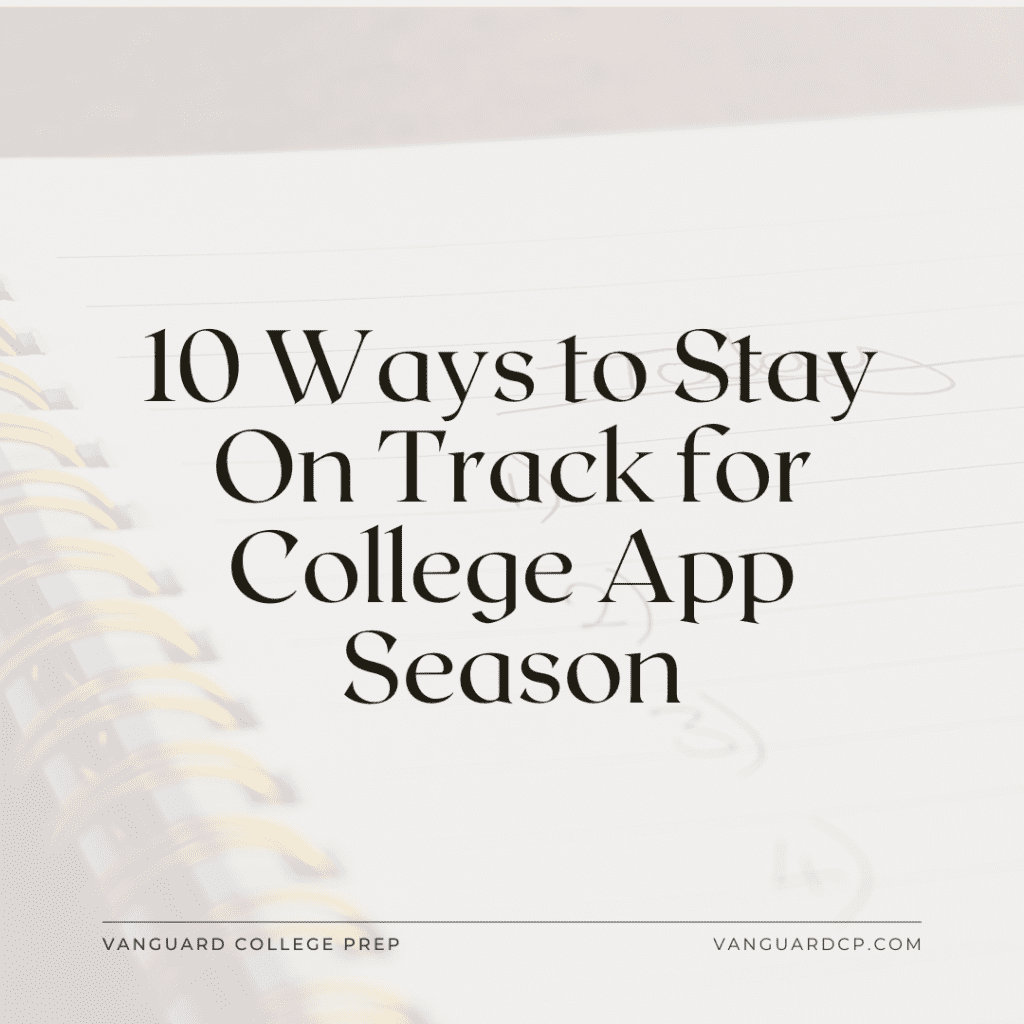- Leave a Comment
- March 16 2023
- College Applications
- By vanguard
10 Ways to Stay On Track for College App Season: Junior Year Spring Checklist
Well, folks, spring has (almost) sprung, and summer will be here before we know it! And you know what’s just around the corner from summer? That’s right – college application deadlines!
Below, I’ve curated a checklist with 10 ways for high school juniors to stay on track for college application season. Copy it into your Notes app, commit it to memory, print it out and tape it to the inside of your locker (do people still do that, or am I stuck in the 2000s?), etc. Wouldn’t want any surprises to spring up on you this summer, would we? (Sorry, couldn’t help myself).
Junior Year Spring Checklist:
1. Make a resume if you haven’t already. Not only can you submit it to colleges in the fall, but you can also use it as a tool to identify any gaps in experience that should be filled before applying to college.
2. Consider creating a portfolio. Often in the form of a personal website or a slideshow presentation, a portfolio illustrates and enhances the details in your resume. Yours might include screenshots of the app you’re building, videos and photos of your dance performances, audio clips of your voice acting, or data charts you generated for your research or internship project.
3. Map out your summer plans. Among your rest and relaxation, be sure to budget out some time for resume-building: meaningful volunteer work, part-time work, internships, research, and/or passion projects. Make this last summer count!
4. Ask your recommenders to write you a letter in the fall. Don’t wait; some teachers limit the number of letters they’re willing to write per year, and non-teacher recommenders (like coaches, mentors, or supervisors) may be unfamiliar with the process and require more time to prepare. We provide a handy how-to guide and template for our College Counseling students to share with their recommenders!
5. Start finalizing your college list. Conduct in-depth online research, attend virtual tours and info sessions, email admissions counselors, connect with alumni, and even visit in-person if you’re able. By June at the latest, you should know exactly where you’re applying, which majors you’re aiming for, and which deadlines you’re sticking to.
6. Ask your high school counselor to submit your transcripts to each college on your finalized list. (You don’t need to wait until Senior year! They can submit your transcripts as soon as Junior year final grades are released).
7. If you’re finished with the ACT or SAT, send the official score report for your best attempt to each school on your college list.
8. Create your Common App account (and any other application portal accounts that may be required for the schools on your college list). Fill out as much information as you can now; it’ll be a major time-saver later on!
9. Soft-start the narrative essay brainstorming process. You can find the prompts in The Common App portal. The best essays almost always require multiple drafts – so the sooner you start, the better!
10. Start looking into private scholarships in your free time. While institutional aid directly from colleges is typically the biggest source of scholarships, if you start early, you may be able to rack up significant cash over the course of the summer. We provide our College Counseling students with a list of scholarship resources and application tips.

You may be tempted to wait until August to shift into college application gear. But between your resume-building activities, your essay writing, and your fun plans for summer break, you’ll have enough on your plate as it is. Your senior-year-self will thank you for checking off these 10 tasks by spring!
For more information about our personalized College Admissions Counseling services, click here.
- Madison Bouse
College Counselor
Washington University in St. Louis (Full-Tuition Merit Scholarship Recipient)



Leave Your Comment